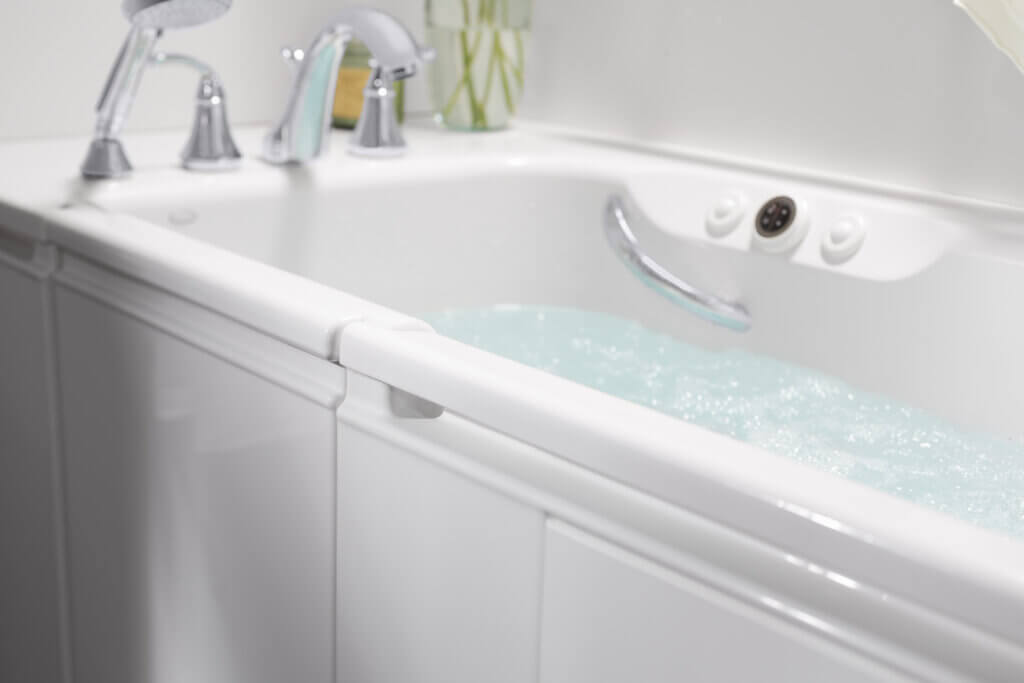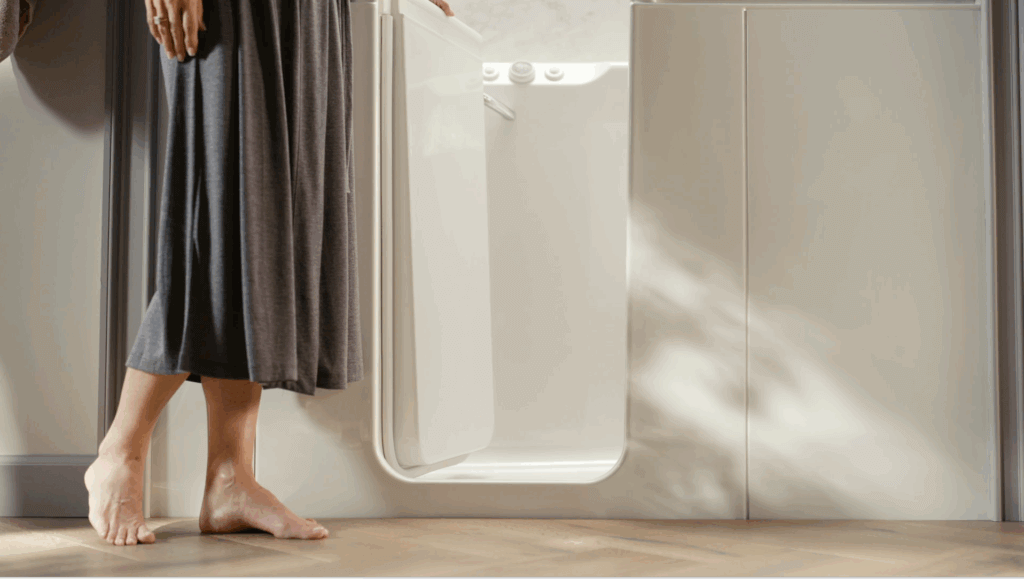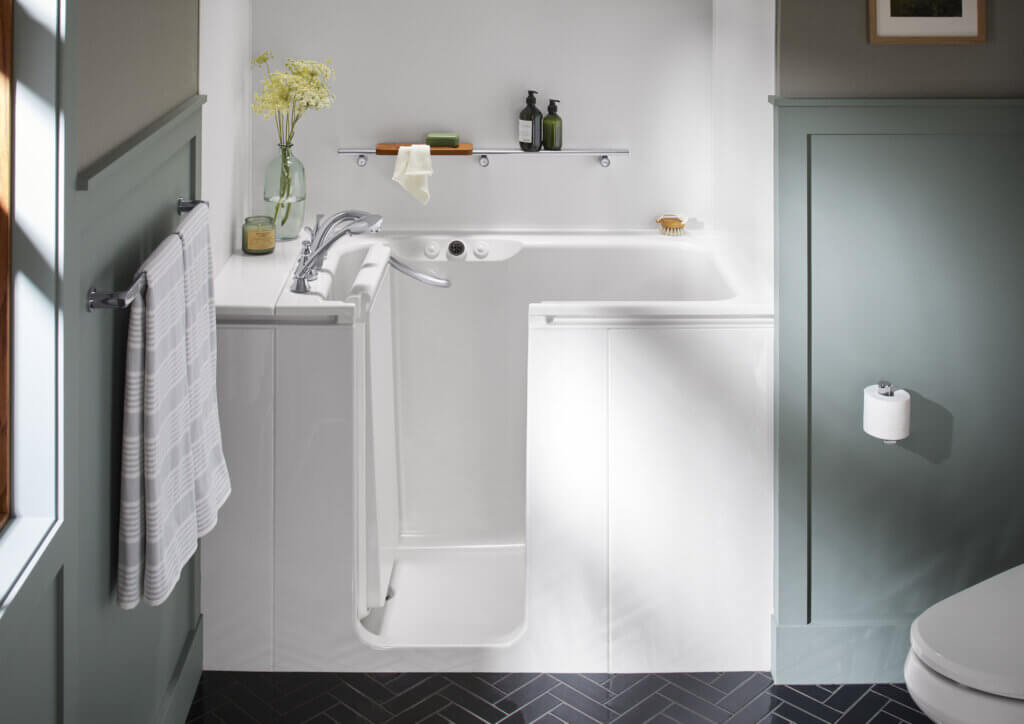Acrylic vs. Fiberglass Tubs: Which Bathtub Material Is Best for Your Next Remodel?

When planning a bathroom remodel, choosing the right bathtub material is more important than many homeowners realize. Your tub isn’t just a center‑piece; it’s used daily, and its material affects comfort, durability, appearance, and upkeep. Two of the most common options are acrylic and fiberglass. At first glance they seem similar, but their long‑term performance is quite different.
This guide will walk through the differences between acrylic and fiberglass tubs—covering performance, maintenance, cost, and durability—so you can make the best choice for your remodel. We’ve also included a helpful FAQ at the end to answer your frequently asked questions. If you need additional help, Pacific Bath is always happy to discuss your options when it comes to walk-in baths and other quality KOHLER products.
Why Bathtub Material Matters
The tub’s material determines how long it lasts, how warm it feels, and how easy it is to keep clean. No one wants to replace a cracked or stained tub only a few years after remodeling, so understanding the strengths and weaknesses of each material is key to a remodel that truly lasts.
What Is an Acrylic Tub?
Acrylic tubs are molded from sheets of acrylic, then reinforced with fiberglass for strength. The exposed surface is a high‑gloss acrylic skin that’s low‑porous and easy to wipe clean.
- Heat retention: Excellent. Acrylic naturally insulates, keeping bathwater warmer.
- Finish: Smooth, glossy, and available in many colors.
- Maintenance: Resists mildew and staining better than most materials; avoid abrasive cleaners to prevent micro‑scratches.
For homeowners who want long‑term durability with minimal upkeep, acrylic is a dependable, mid‑priced choice.

What Is a Fiberglass Tub?
Fiberglass tubs are formed by spraying fiberglass‑resin into a mold, then coating the shell with a thin gelcoat finish. The gelcoat starts out smooth and water‑resistant, but as it wears the underlying fiberglass matrix can become more porous.
- Up‑front cost: Lower than acrylic, so popular for budget or quick-turn projects.
- Weight: Very light, making installation easier in tight spaces.
- Drawbacks: Gelcoat can dull, scratch, or discolor faster than acrylic. Once the surface wears through, the tub can absorb water, leading to stains or hairline cracks.
Fiberglass works well in low‑traffic bathrooms or rentals where budget is the top priority, but it rarely outlasts acrylic under daily use.
Key Differences at a Glance
- Durability: Acrylic resists cracking and chipping better than fiberglass, which can dull or crack over time.
- Heat Retention: Acrylic insulates better, keeping bathwater warmer longer.
- Finish: Acrylic has a glossy, colorfast finish; fiberglass often starts with a gloss but may fade or dull with wear.
- Maintenance: Acrylic’s low-porous surface is easier to clean; fiberglass requires more gentle cleaning and is more prone to staining.
- Lifespan: Acrylic tubs typically last 10–15 years, with high-quality models and proper care reaching 15–20 years. Fiberglass tubs generally last 8–12 years, though signs of wear may appear sooner in high-use environments.
- Up-front Cost: Acrylic costs slightly more but offers better long-term value; fiberglass is more budget-friendly initially.
Bottom line: Acrylic costs a bit more at purchase but usually outperforms fiberglass over time, especially in busy households.

Why Acrylic Is the Better Long‑Term Choice
- Fewer refinishes: Acrylic’s surface integrity lasts longer, so you’re less likely to need reglazing.
- Better color stability: Pigmented acrylic resists yellowing and sun fading.
- Comfort: Warmer surface temperature and smoother feel.
- Resale value: Buyers often perceive acrylic as a premium upgrade over fiberglass.
If longevity and low maintenance rank high on your remodel checklist, acrylic earns its slightly higher price tag.
Alternatives Worth Knowing
Other materials—cast iron, enameled steel, stone resin, gelcoat composites—all have their niches, but they bring trade‑offs in cost, weight, or upkeep. For most modern remodels, acrylic strikes the best balance of durability, comfort, and affordability.
What KOHLER Walk‑In Tubs Are Made Of
KOHLER walk‑in tubs use a multi‑layer composite shell engineered for strength and easy cleaning:
- Fiberglass‑resin core – delivers structural rigidity while keeping the tub lightweight.
- Reinforced gelcoat – seals the core, creating a dense, water‑resistant barrier.
- High‑gloss surface – KOHLER’s proprietary finish provides the smooth, easy‑clean exterior. KOHLER’s premium surface finish offers the performance benefits of an acrylic tub with added strength from its multi-layer design.
Because fiberglass is buried in the core and not exposed, it delivers strength without the maintenance downsides of a standard fiberglass tub. The result is a walk‑in bath that pairs fiberglass reinforcement with an easy‑clean, glossy surface that retains heat and resists everyday wear. With innovative construction and a multitude of additional features and accessories, KOHLER walk-in tubs offer a premium bathing experience that’s built to last.

FAQ: Acrylic vs. Fiberglass Tubs
- Q : Are acrylic tubs worth the extra cost?
- Yes. Their longer service life and easier maintenance often offset the higher purchase price.
- Q : Can acrylic scratch?
- It’s more scratch‑resistant than gelcoat, but use non‑abrasive cleaners to maintain the shine. Minor marks can usually be buffed out.
- Q : Do fiberglass tubs always stain?
- Not immediately. Fresh gelcoat is smooth; stains become a risk once that layer wears thin.
- Q : Which material keeps bathwater warmer?
- Acrylic. Its insulating properties outperform gelcoat‑on‑fiberglass.
- Q : How long do these tubs last?
- With average home use: acrylic 10–15 years (or more with good care); fiberglass 8–12 years.
Acrylic and fiberglass may look similar, but performance tells the real story. If you’re investing in a bathroom remodel you want to enjoy for years, acrylic offers superior durability, warmth, and low‑stress upkeep.
At Pacific Bath, we install KOHLER walk‑in tubs crafted with a reinforced composite shell and a glossy, easy‑clean finish designed for lasting comfort.
Ready to upgrade to a tub that truly lasts? Schedule your free consultation with Pacific Bath today.


